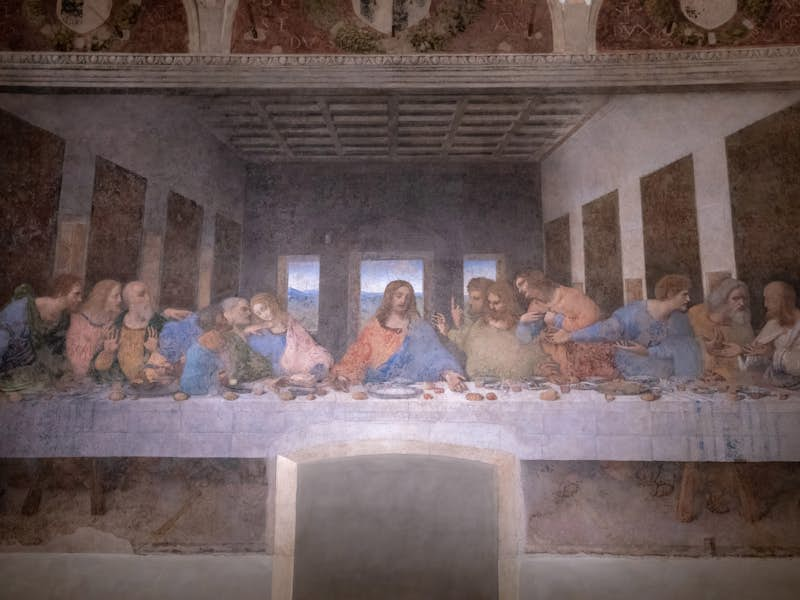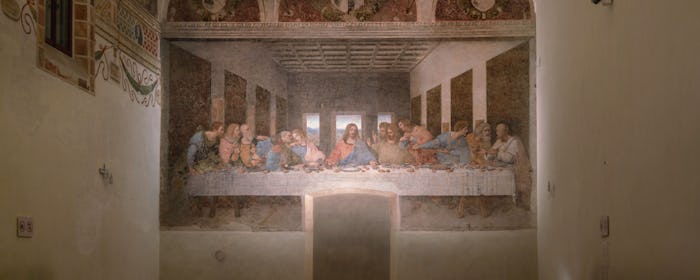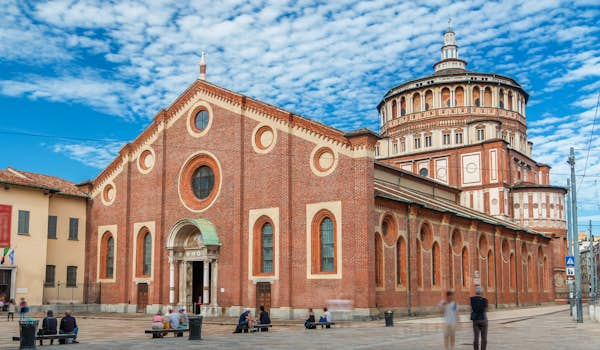One of the most iconic works of art in the world, Leonardo Da Vinci's The Last Supper is undoubtedly the most popular attraction in Milan. Situated on a refectory wall in the Convent of Santa Maria delle Grazie, the painting is well over half a millenia old and due to environmental factors, intentional damage and the method of painting employed itself; much of the artwork has been lost and very little of the original painting remains despite multiple restoration attempts. Due to this, the crowd that gathers each day to cast their eyes upon the painting is carefully monitored. At any given point of time, a maximum of 30 people are allowed to briefly share the room with the painting for fifteen minutes. Due to this, The Last Supper tickets have become difficult to come by.
In this guide, we will highlight all that there is to know about how one could go about paying the painting a visit along with access to some exclusive Last Supper tickets.
The Last Supper Tickets Trending This Year
Due to strict conservatory measures, the supervisor of cultural artifacts for the city of Milan, restricts all visits to a maximum of 15 minutes. Due to the restricted viewing and popular demands, tickets to see The Last Supper are sold out well in advance. However, working with a network of tour operators around Milan, including official ticket partners, we now have tickets available on certain dates and certain times. Check out the Last Supper tickets available below to confirm their date of availability.
The Last Supper Ticket Options
The Last Supper Painting
Dedicated to a fleeting moment before Christ's passion and a testament to the genius of Leonardo Da Vinci, The Last Supper is perhaps one of the most iconic works of art from the Italian Renaissancea. The large mural painting occupies an 8.8 x 4.6 meters space on the refectory wall of the monastery of Santa Maria delle Grazie in Milan, Italy.

The original Last Supper by Leonardo Da Vinci. From Left to Right:
• Bartholomew, James and Andrew in the first group of three
• Judas Iscariot, Peter, and John in the second group of three
• Jesus
• Apostle Thomas, James the Greater, and Philip in the third group of three
• Matthew, Jude Thaddeus, and Simon the Zealot in the final group of three
The Last Supper - The Story of the Painting
Painted by Leonardo Da Vinci at the end of the 15th century, the work of art was commissioned by the Duke of Milan, Ludovico Sforza, and it was to be painted in the monastery of Santa Maria delle Grazie. The church had just been remodeled by Bramante in order to add the Sforza family mausoleum in it. Ludovico wanted The Last Supper to be the centerpiece of the mausoleum.
Leonardo employed a novel method to paint The Last Supper on the refectory walls, parting ways with the traditional method of painting frescoes on wet plaster. Looking to achieve greater detail and luminosity in the painting, Leonardo painted with oil and tempera on a dry wall coated with plaster and a layer of white lead. The technique is also in part responsible for the relatively short lifespan of the painting when compared to other frescoes of the time.
The last restoration work on The Last Supper was done in 1999 when after 20 years of work, all the layers of repaint had been removed to expose the original pigments. What remains of the refectory has now been hermetically sealed and one needs to pass through two doors to view the painting.
The Last Supper - The Story in the Painting
The elusive moment that The Last Supper catches and manages to freeze in time is the reaction of each apostle at the moment Jesus proclaimed that one of them would betray him. With the expressions of the apostles ranging between anger and shock, one that stands out is that of Judas. Draped in green and blue and sitting withdrawn in the shadows to the right of Jesus, Judas can be seen clutching a small bag and tipping over a salt cellar. In some studies, the bag harks back to the silver given to him as payment to betray Jesus and the tipping of the salt references the Eastern expression of "betraying the salt".

As stories and interpretations go, the painting highlights the moment Jesus, turns to Saints Thomas and James to his left, and predicts that the betrayer will pick up a piece of bread from the table at the same time as he does. Their faces can be seen holding a reaction of horror as Jesus points his left hand at a piece of bread on the table. Distracted by John and Peter, Judas reaches out for a piece of bread that unbeknownst to him, Jesus is reaching out for as well with his right hand. This can clearly be seen in Giampietrino's reproduction of the Last Supper.
Other Christian references such as the number 3, representing the Holy Trinity, are referenced in the painting as well - the grouping of the apostles, the number of windows in the background, Jesus's shape resembling a triangle and the triple arched ceiling of the refectory painted with Sforza coats-of-arms.
Santa Maria delle Grazie, Milan
A UNESCO World Heritage sight, Santa Maria delle Grazie, or Holy Mary of Grace, is a historic monastery in Milan from the late 15th century. Unassuming, yet uniquely Italian, the brick red church is located about a 15 minutes walk from the Duomo. The building was commissioned and built by the Sforza family and is most famous for perhaps the most obvious reason - being the home of The Last Supper.

During the Second World War, the building was bombed by an Allied bombardment that hit the church and the convent. Most of the refectory was destroyed in the attack. However, some walls survived, including the one that The Last Supper was painted on. The wall was protected behind layers of sand bags to keep it safe. Multiple restoration work has since been done on the painting and it is now safe for hopefully centuries to come.
Practical Information - All You Need To Know
The Last Supper Timings
Closed - Mondays, 1st Januray, 1st May, 25th December
Tuesday to Sunday - 8:15am - 7pm (last entry at 6:45pm)
Extended timings till 10pm on October 15th, October 22nd, October 29th, November 5th (free entrance), November 12th, November 19th, November 26th, December 3rd 2017.
Getting There
The church is located between metro stations Cadorna Triennale and Conciliazione. It’s a 10-minute walk from either station to the venue.
Dress Code
A strict dress code must be followed in order to enter the church. Shoulder and knees must be covered by both men and women at all points in time.
Photography
You can take photos of The Last Supper, however, usage of a flash is prohibited.
The Last Supper Experience Reviews
The Last Supper by Da Vinci is a must see in Milan, but it's probably the most difficult thing for you to see if you don't book tickets in advance. I hadn't booked tickets in advance so I went on a guided tour to see it, but it was worth it. Book your tickets way in advance and do some reading before going. If not, the guided tours offer tickets and valuable information about the mural.
You must get tickets in advance as this sells out fast. A very efficiently run tour as you are only allowed to stay in the room with the Last Supper and the the al fresco on the opposite wall for 15 min. They have done a lot to minimize damage to the painting in the future. It is worth the money to make sure you do on your visit to Milan. You cannot take in any liquids, makeup, backpacks. This includes sunscreen sticks etc however they provide free lockers to store until after the tour.
Read what others have to say about their Last Supper experience on TripAdvisor.


